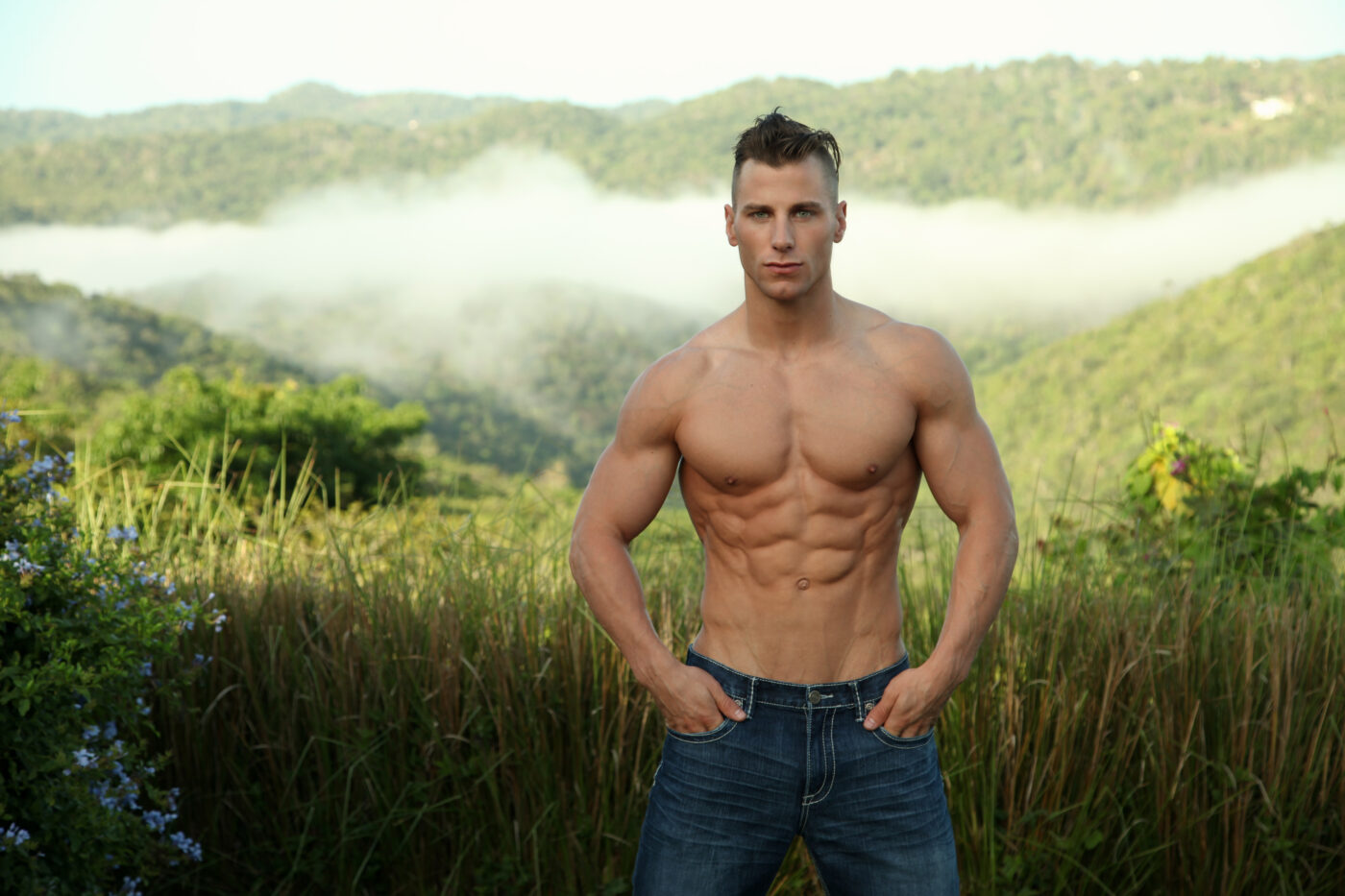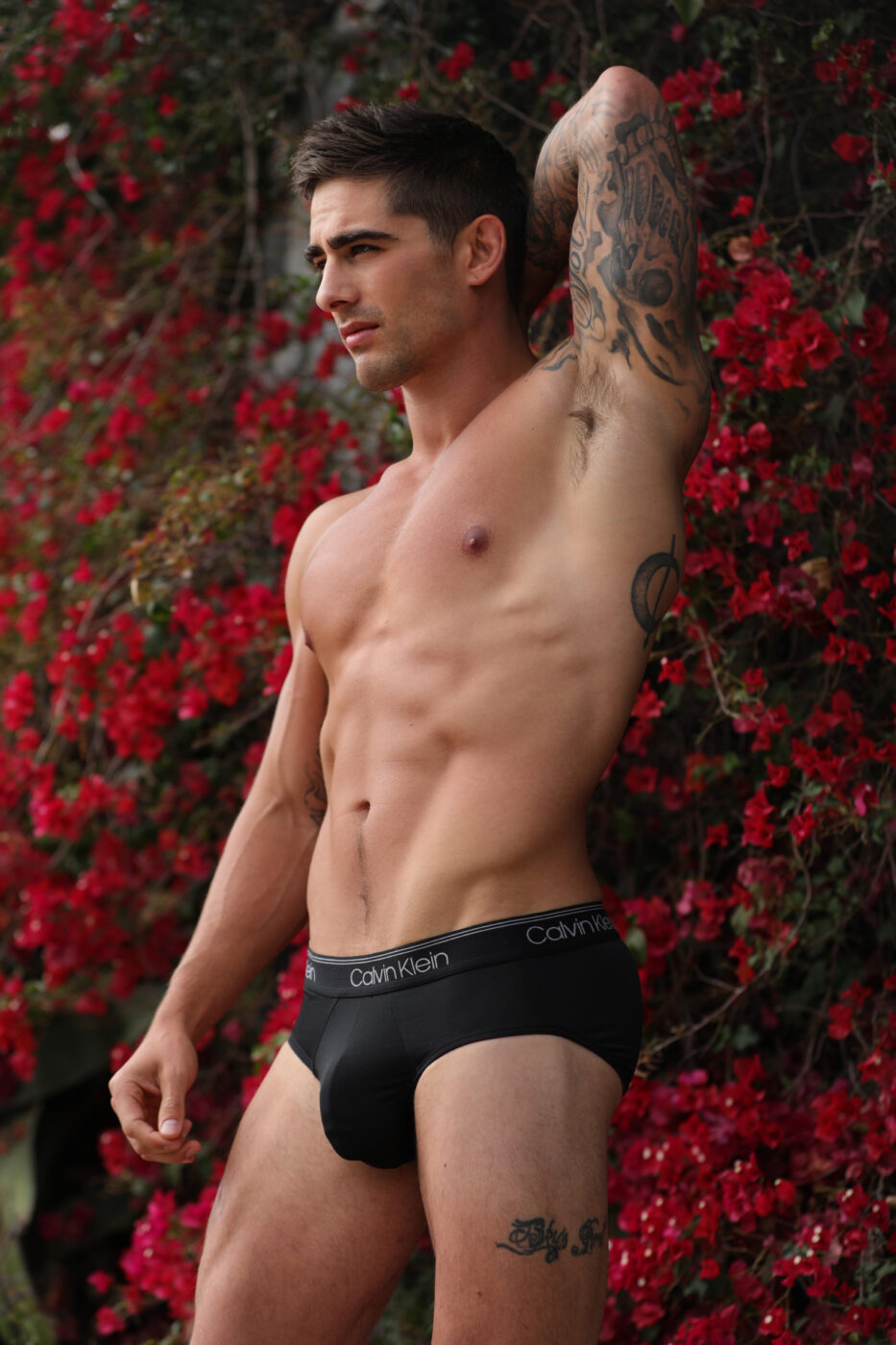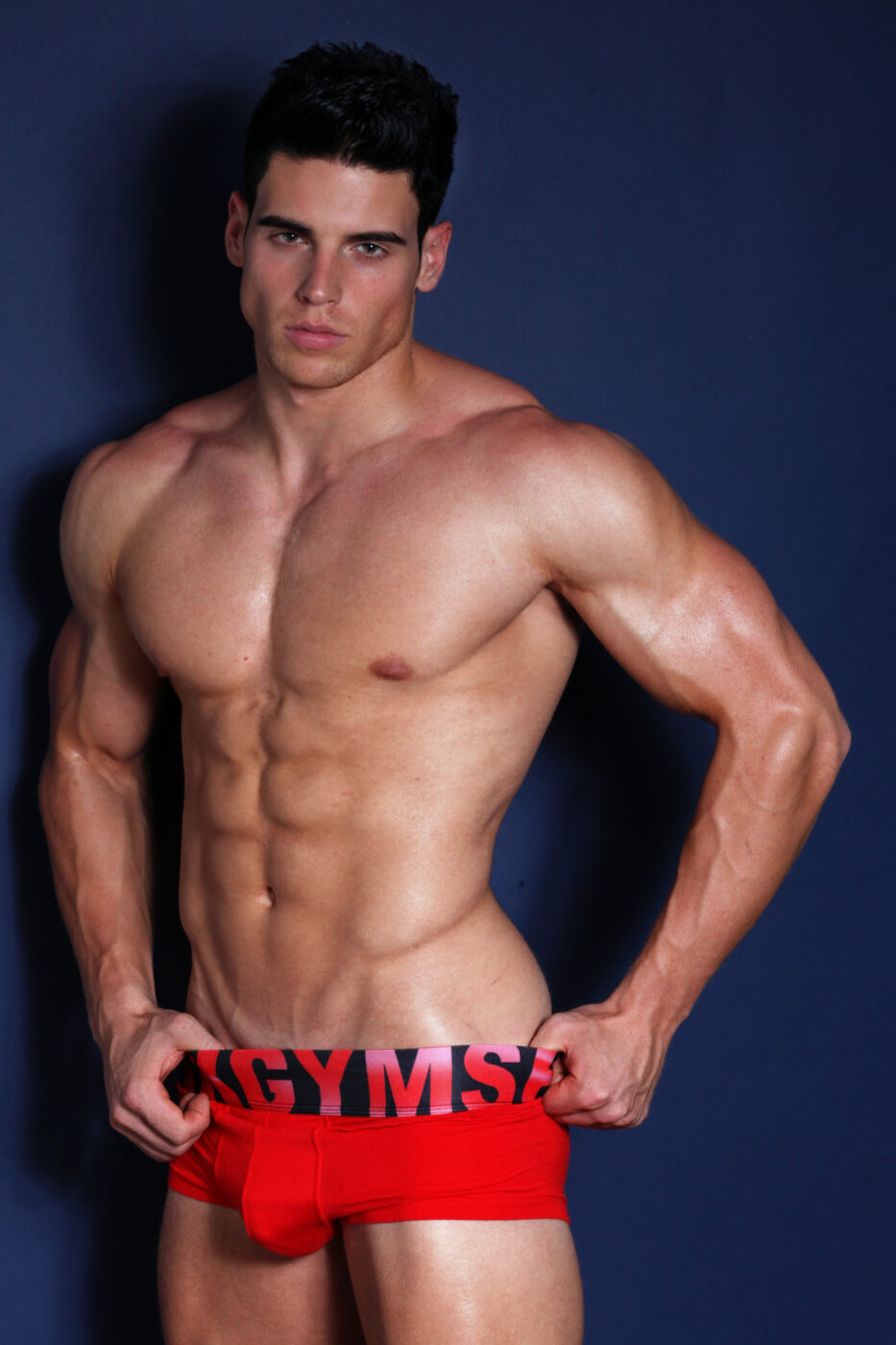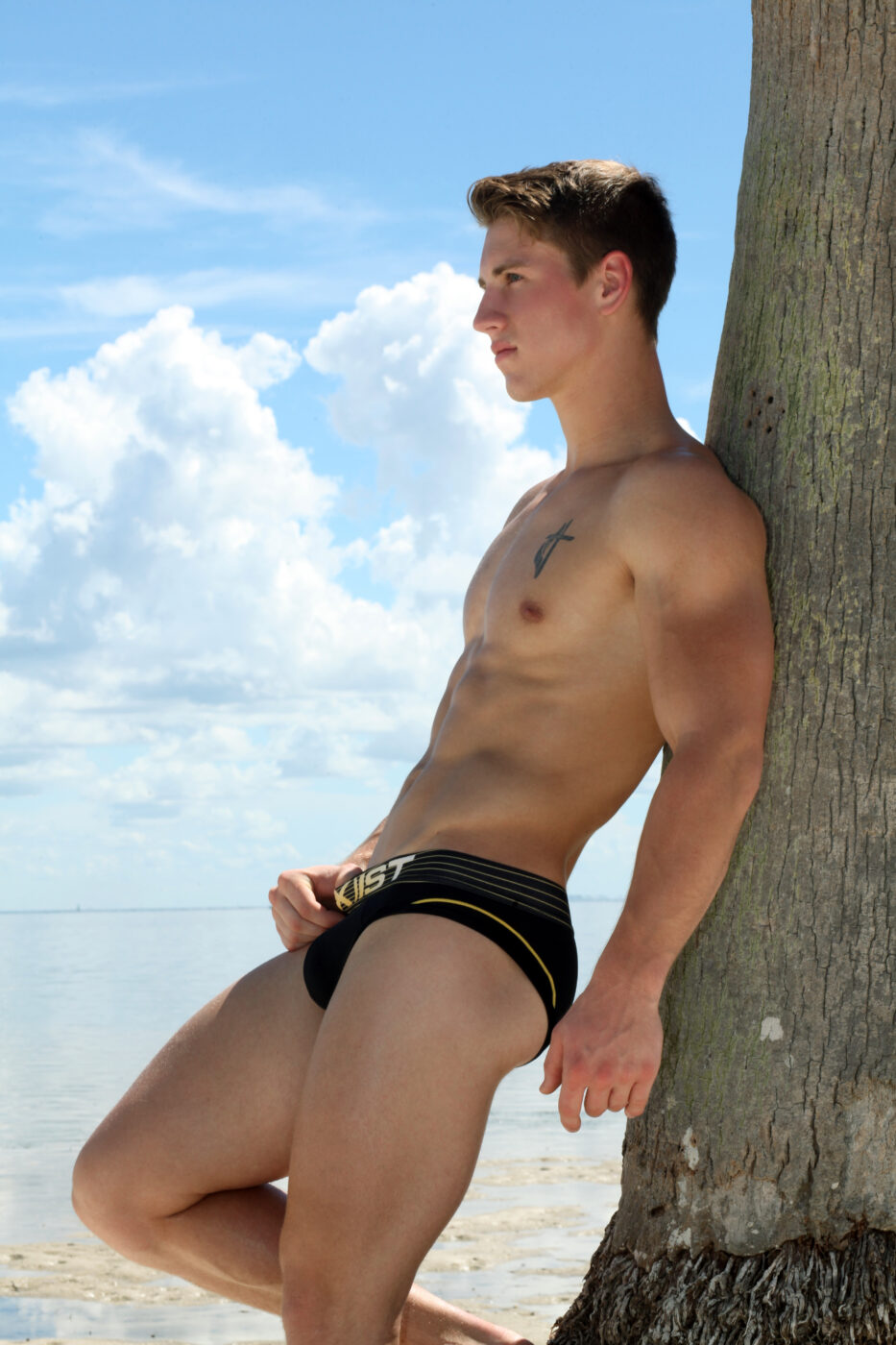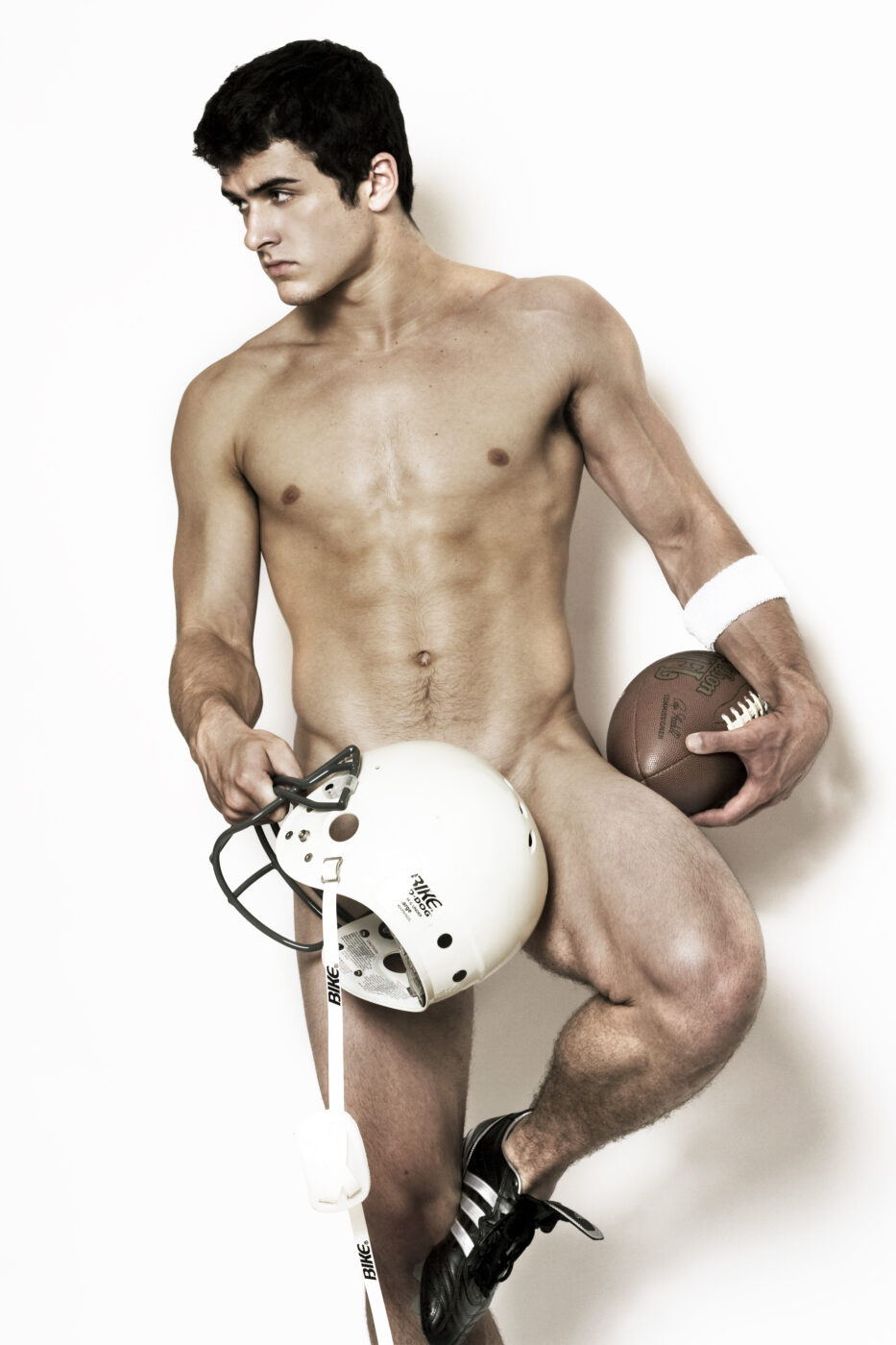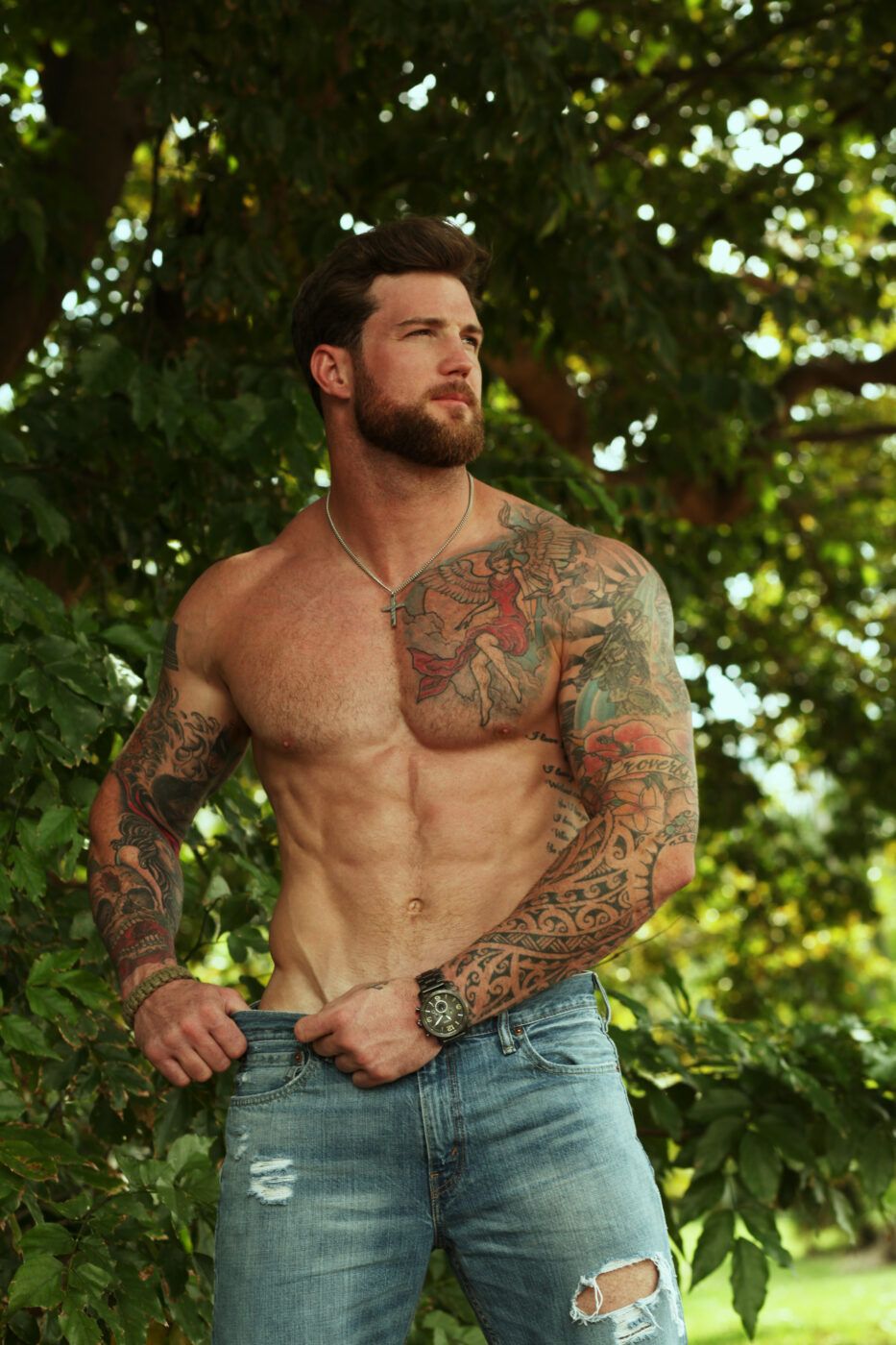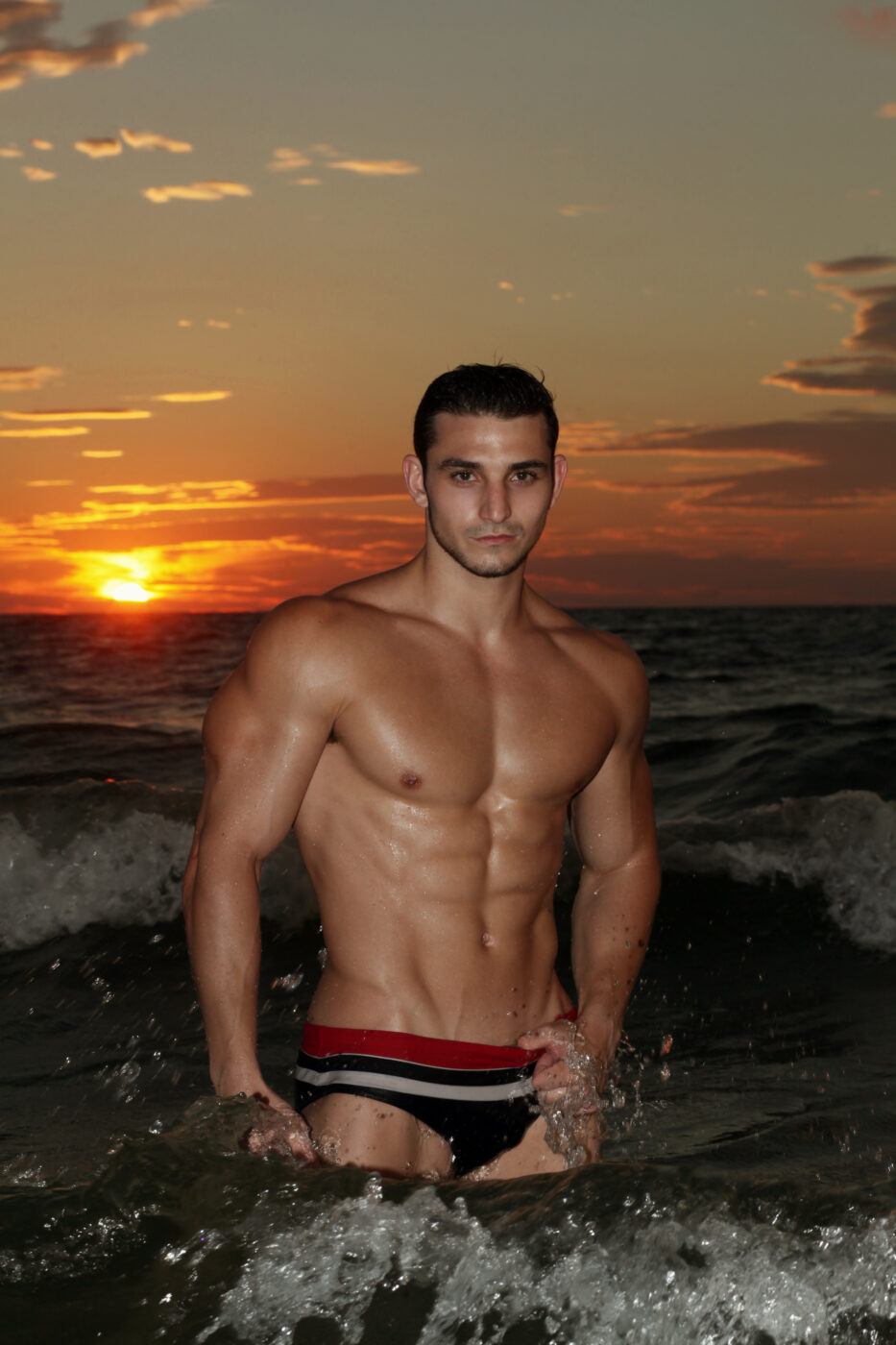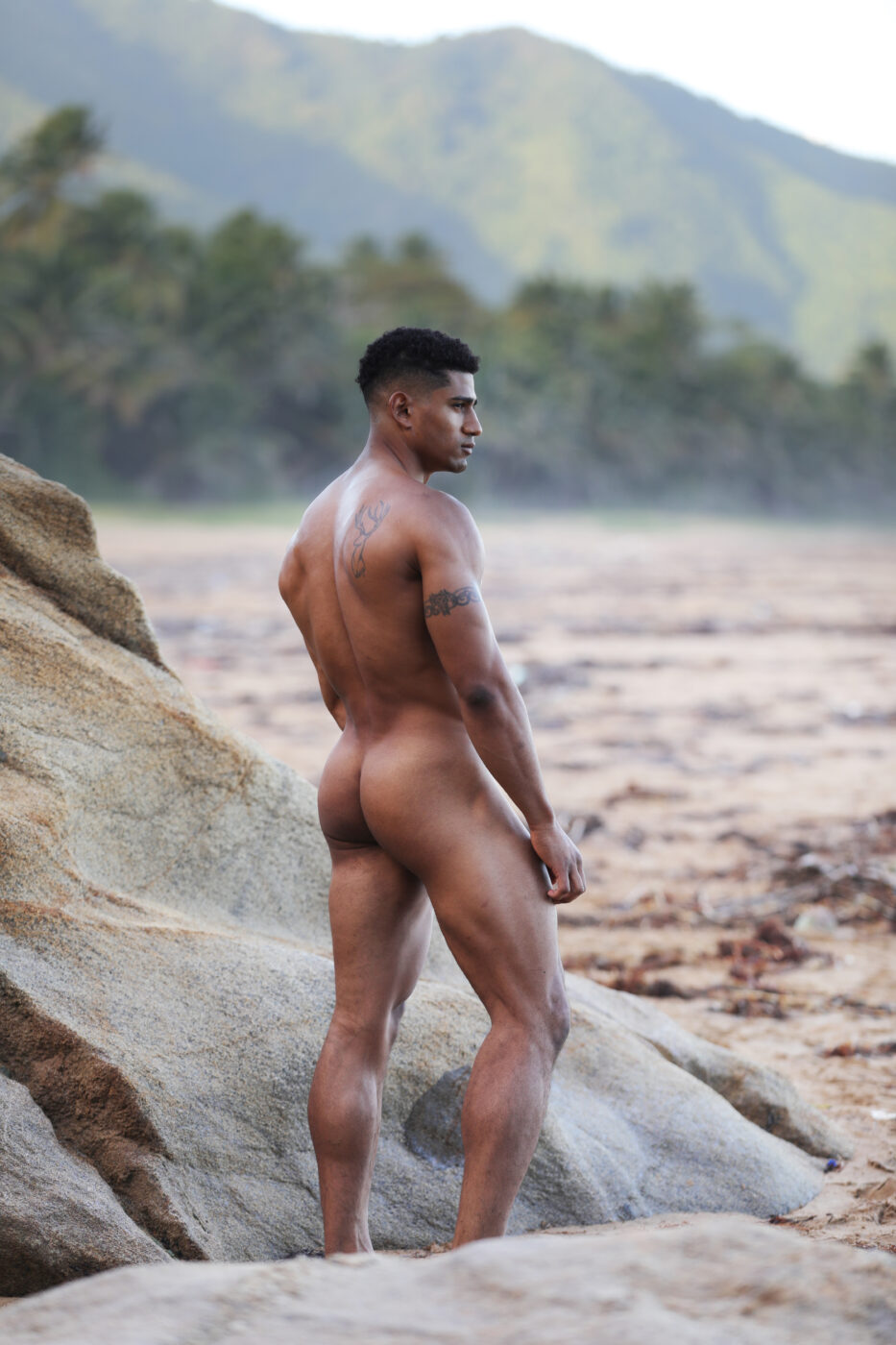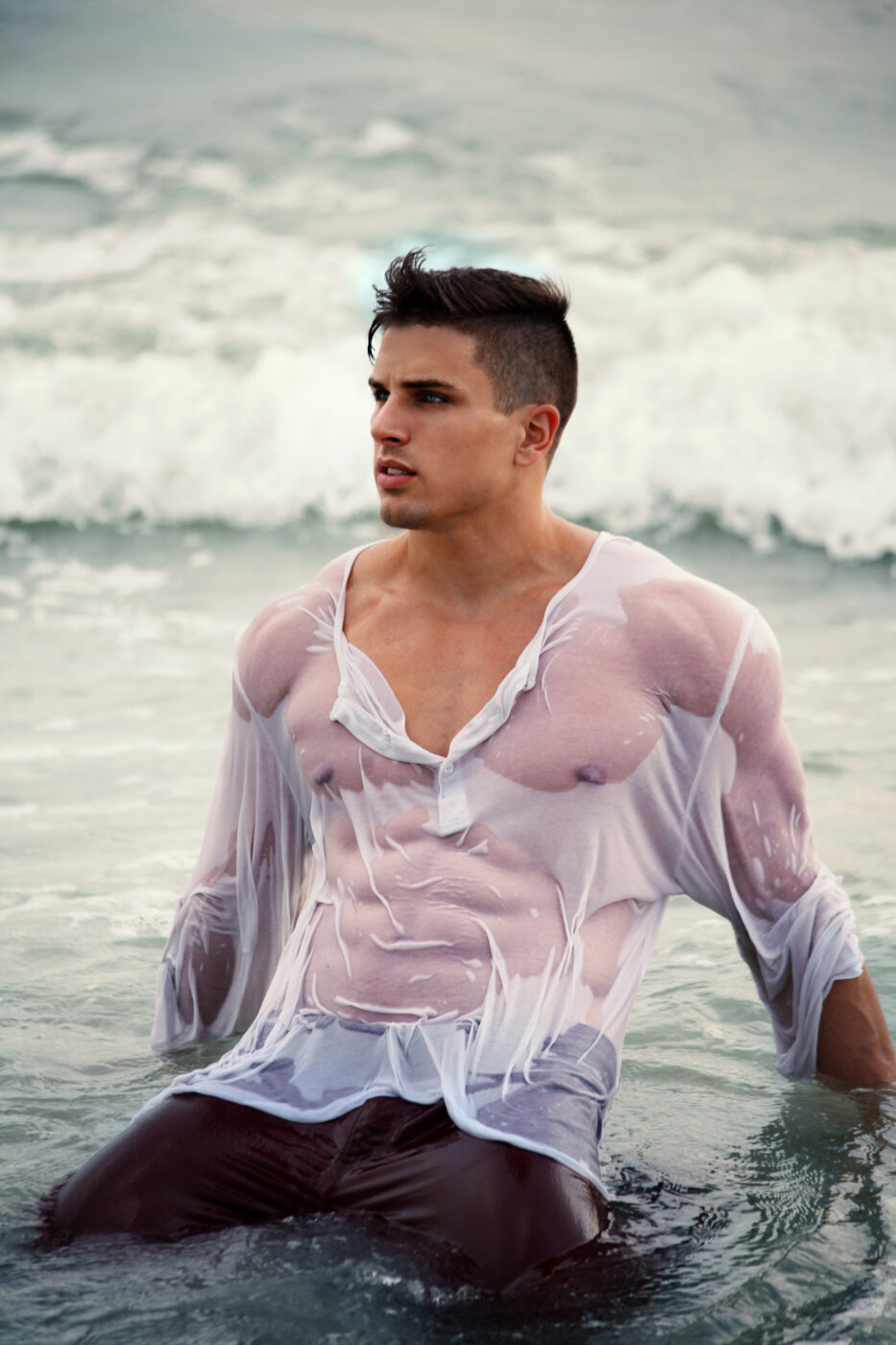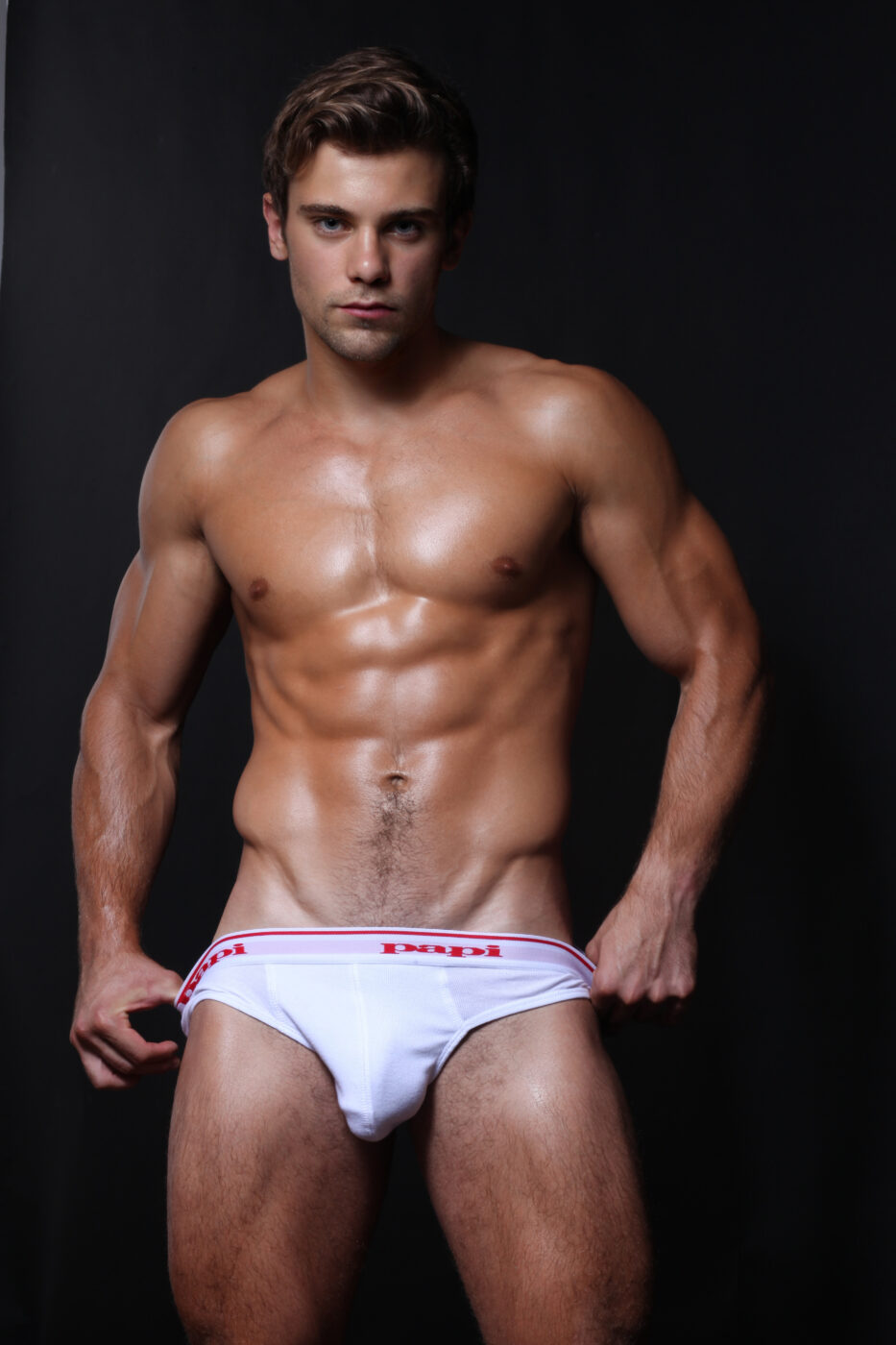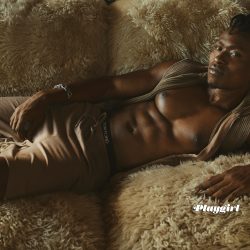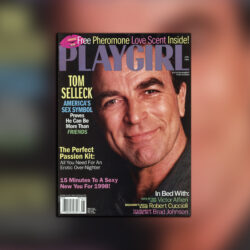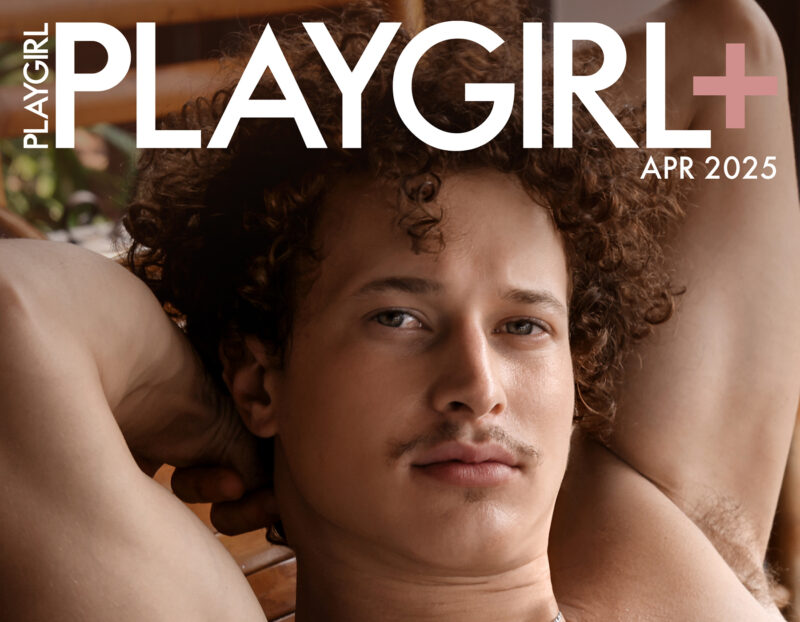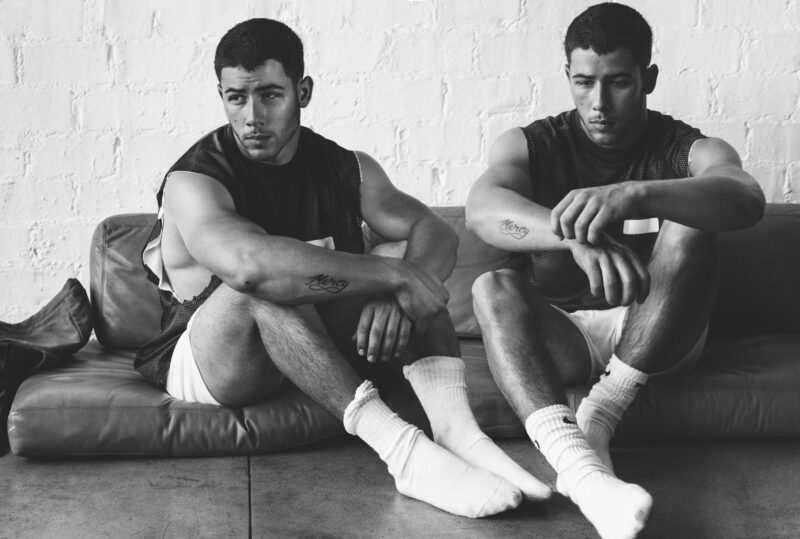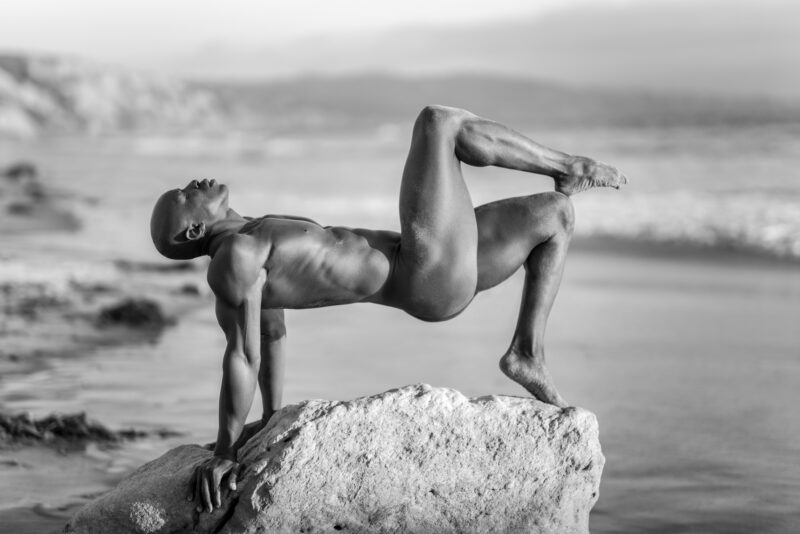His work has been featured everywhere –newspapers, magazines, national television. The models he discovered and photographed got signed by the top modeling agencies and went on to land major campaigns with the likes of Abercrombie and Fitch, Ralph Lauren, 2xist… We’ve been fantasizing about his adonises since 2003, when All American Guys (AAG) was launched, but we had never met the artist behind the camera. We snatched the opportunity to have dinner with Downs in Hollywood and to ask him a few questions.
How did you get started with photography and why?
Photography was initially just a hobby. I borrowed my dad’s Minolta film camera and began experimenting with lighting and shadows. Initially I would photograph family members, friends and pets before deciding I wanted to focus on model and physique photography. But again, it was all simply a hobby. There was never an intention or dream of becoming the next Mapplethorpe.
Tell us about your artistic journey.
My life story has been quite unique. I graduated college and pursued a career in politics, climbing the social ladder in the Washington DC political scene before realizing I was getting burnt out from the pressures of a very demanding industry. But photography and art were always my get-away and weekend hobbies. After exiting the political world and subsequently doing a couple years stint as an IT systems engineer I decided to go all in with my photography, with a focus on male fitness models. The gamble paid off and it’s been a blessing.
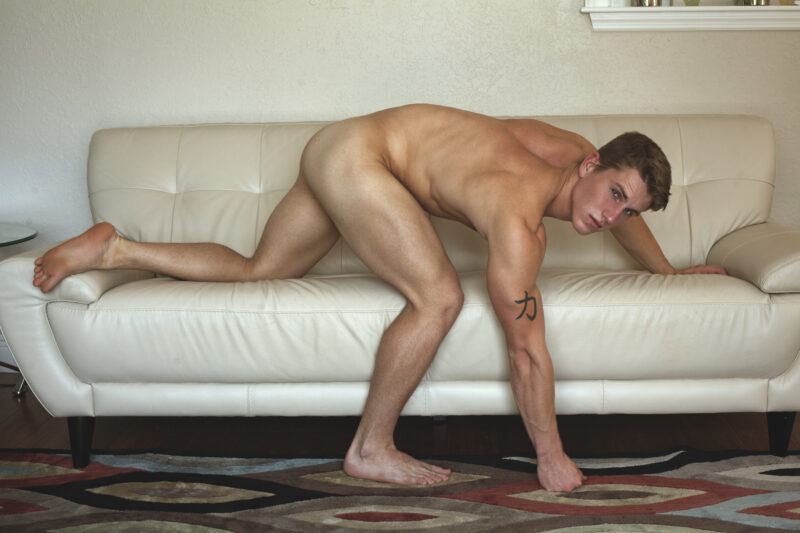
Griff photographed by Michael A. Downs.
You’re best known for your work on the male form —though you’ve lensed women and celebs too. What attracts you to the male form and what do you aim to capture on film?
When I first started doing photography, I was drawn to both the strong male physique and the glamour and beauty of the female body. Somewhere along the way, my male photography took hold in terms of popularity. People wanted to see more of my “All American Guys” work! So naturally I focused on that.
With respect to the male form, I aim to capture a certain masculine aesthetic and expression; an athletic vibe or a moment that stands out with the physique and face being the protagonist.
You have a knack for discovering new talent. In fact, we don’t know any other photographer who regularly places models with the top agencies (as opposed to booking through them). Is there a secret to the way you go about casting new faces?
I would say I am pretty outgoing and straightforward with my approach to scouting new talent. You can’t be shy in this business. I also tell it like it is and not beat around the bush. Being up front and clear with new prospective talent is a key to success in this sometimes-flaky industry.

Dean Tsiranides photographed by Michael A. Downs.
We love your outdoor photography: gorgeous athletes in their speedos, against the ocean waves. It’s a world of beauty, a paradise where the harmony of the body meets the harmony of nature. Tell us more about your aesthetic, the difficulties and the rewards of shooting outdoors.
Although I do quite a bit of studio photography, I really do prefer shooting outdoors… the beaches, out in nature, forests, mountains and such. Not to mention urban/city locations. The outdoor world is my oyster so to speak. So many possibilities and you can incorporate the landscape with a model’s best features.
Outdoor shooting is also a bit more challenging because oftentimes you’re dealing with mother nature and changing weather conditions. So, planning and preparation is always key in these instances. But in general, outdoor photography has allowed me to create some amazing imagery.
Let’s talk about All American Guys and its collection of fit American men. Why the exclusive focus on American fitness models? Is there a strong demand (still) and a market for publishing beautiful men, when competing with social media, Onlyfans and now AI?
All American Guys (AAG) came about 25 years ago and the concept still works. We do have a unique formula. But the marketing approach is somewhat different today than say 2003. Back when the project was launched it was somewhat of a novelty… the idea of fit guys on the Internet showing off their hard-earned gym bodies, or the college athletic jock posing for fans. The mainstream media had a field day with our concept and AAG received a lot of worldwide publicity. After-all, there was nothing else like it.
Then came the advent of social media which really took hold in the early 2010’s. That basically changed the playing field for boutique content outlets like AAG and others. We were now competing with free content, and lots of it. Not to mention, male models also used these new online platforms like Instagram, Facebook, etc. to brand themselves and compete directly with online magazines or websites.
Smart phones and content monetization platforms like Onlyfans only made it a more crowded field for everyone. So that’s the reality we live in today…. a bit saturated and so we have to really distinguish ourselves. We are planning some innovative new approaches however, so stay tuned.

Jake B. photographed by Michael A. Downs.
Secrets of the trade. How does Michael Downs get his models to relax before the camera?
I’m typically very blunt and open with my models about what to expect during a photo shoot. I’ve also been told I’m a good director. I think when models have a clear vision of what they’re doing when in front of the camera and you work as a team, it makes things easier in terms of achieving a successful production. And there is very little stress usually when I’m shooting talent. You have to project calmness.
Your videos are no less popular, no less hot than your photos. Do you approach the two media differently? How so?
I’ve been doing video production since I was 17. I was actually trained somewhat during my college years when I was initially a journalism major. Over the years I honed my video skills and have learned that while the medium is different you have to take the same approach in terms of directing your talent and understanding the fundamentals of lighting.
To me photography and videography go almost hand in hand. But I do find that sometimes models will excel better with one medium over the other. Some guys are great still photography subjects while others really come to life and shine when the video camera is rolling.
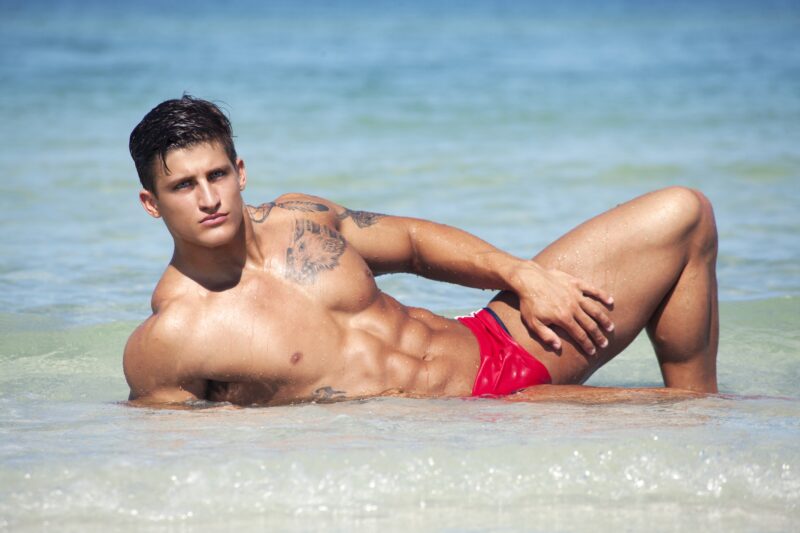
Quinn photographed by Michael A. Downs.
Who are the photographers who have influenced you the most –and especially the photographers who explored the male form?
I was inspired by photographers like Tom Bianchi, Bruce Weber, Steven Meisel and Annie Leibovitz to name a few. I was captivated by their presentation in coffee table books, magazines, ad campaigns and even album covers. I wanted my style of photography to be unique to me, but I certainly took some artistic cues from these greats. One of my inspirations also became a good friend, the uber talented Mark Jenkins. Unfortunately, he passed about a year ago, but his memory lives on in his massive collection and body of work that many fans still enjoy. I have three of his originals hanging in my residence.
Did Playgirl Magazine play any role in your artistic/personal journey? Shall we see a Michael Downs pictorial on Playgirl+ someday?
I’ve always been a fan of Playgirl since back when I was in college. The mix of pushing the edge, striking photography combined with great pop culture articles really made an impression on me. I never thought I’d someday be interviewed by them. I’m honored and hopefully one day soon I can contribute a mesmerizing cover and/or photo spread. I can name a good number of my models who’d jump at the chance.
Thank you, Michael.
- Alex Cohen photographed by Michael A. Downs.
- Dan Bentano photographed by Michael A. Downs.
- Griff Bernth photographed by Michael A. Downs.
- Ian photographed by Michael A. Downs.
- James Jensen photographed by Michael A. Downs.
- Justin Howell photographed by Michael A. Downs.
- Kevin Baines photographed by Michael A. Downs.
- Mylique photographed by Michael A. Downs.
- Ryan Harmon photographed by Michael A. Downs.
- Sean B photographed by Michael A. Downs.
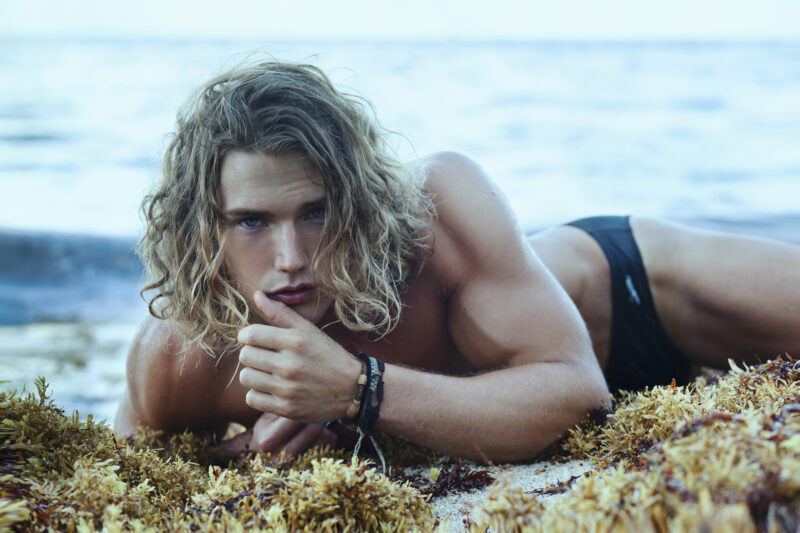
Benny photographed by Michael A. Downs.
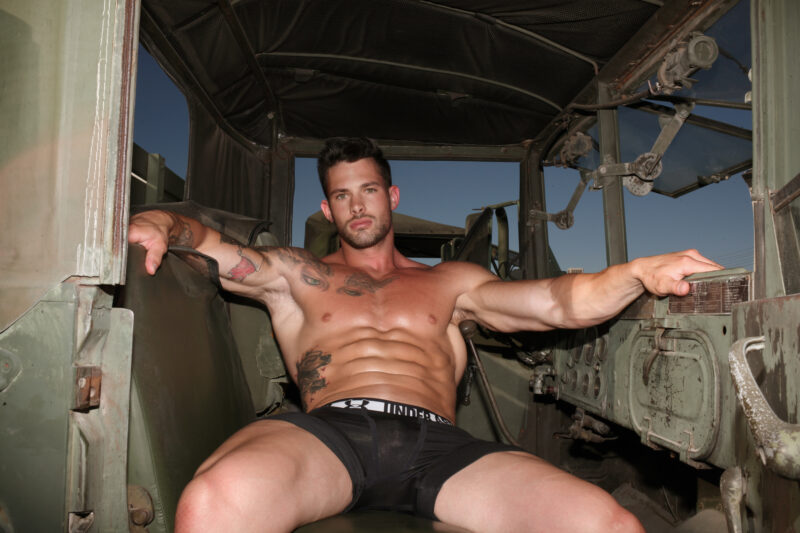
Johny Kane photographed by Michael A. Downs.
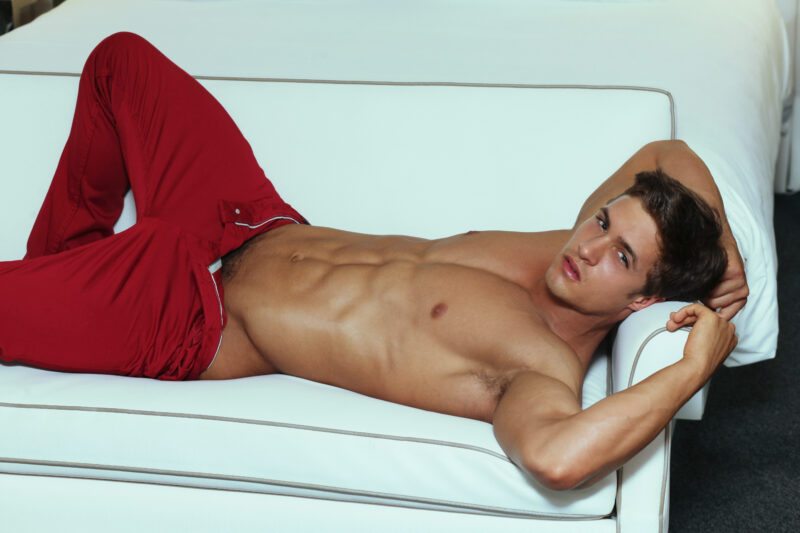
Robbie photographed by Michael A. Downs.

